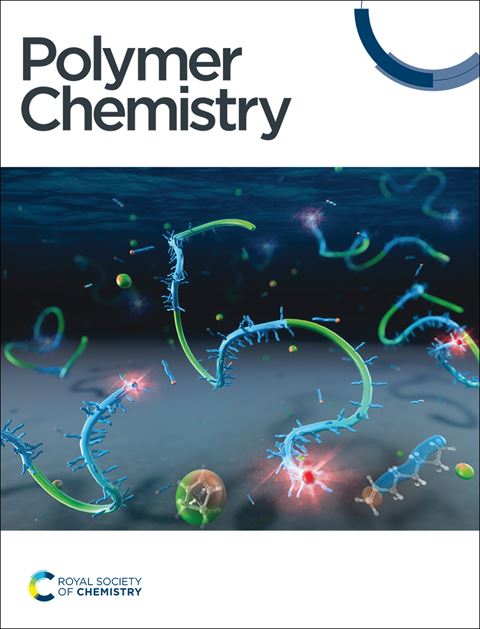Dynamic by Design: Unlocking Full Relaxation in Disulfide Epoxy Networks
IF 4.1
2区 化学
Q2 POLYMER SCIENCE
引用次数: 0
Abstract
Aromatic disulfide-containing epoxy networks offer a promising approach to achieving sustainable materials due to their reparable, recyclable, and reprocessable properties. However, in all cases, an excess of hardener is required to achieve full reparability. In this study, a theoretical analysis demonstrates that when aromatic disulfide is incorporated into the amine hardener, the resulting epoxy vitrimer does not fully relax due to epoxy group homopolymerization, which leads to the formation of non-dynamic crosslinks. To overcome this limitation, an epoxy monomer containing disulfide bonds was synthesized. This monomer enables complete relaxation, as the homopolymerized epoxy system also contributes to the formation of dynamic crosslinks. Using this new monomer, epoxy vitrimers were prepared that can relax without requiring an excess of amine. However, these materials exhibit inferior properties compared to those prepared with an aromatic disulfide-based diamine. To enhance their properties, a non-dynamic epoxy was introduced into the formulation. Both experimental and computational results demonstrate that up to 32% of non-dynamic epoxy can be incorporated without compromising dynamic features such as repairability, reprocessability, and recyclability, making this system significantly more suitable for industrial implementation.动态设计:开启环氧二硫网络的全面弛豫
本文章由计算机程序翻译,如有差异,请以英文原文为准。
求助全文
约1分钟内获得全文
求助全文
来源期刊

Polymer Chemistry
POLYMER SCIENCE-
CiteScore
8.60
自引率
8.70%
发文量
535
审稿时长
1.7 months
期刊介绍:
Polymer Chemistry welcomes submissions in all areas of polymer science that have a strong focus on macromolecular chemistry. Manuscripts may cover a broad range of fields, yet no direct application focus is required.
 求助内容:
求助内容: 应助结果提醒方式:
应助结果提醒方式:


